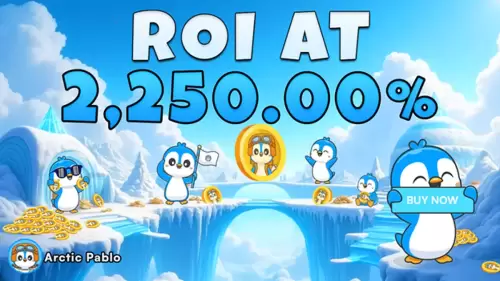Exploring the latest developments in Ethereum, Arbitrum, and the Pectra upgrade, including staking trends and layer-2 dynamics. Stay informed about the future of blockchain!
Ethereum, Arbitrum, and Pectra: Navigating the Evolving Landscape
Ethereum, Arbitrum, and the Pectra upgrade are key players in the blockchain space. Let's dive into the staking surge, layer-2 shifts, and Pectra's impact on scaling and security.
Ethereum Staking Soars: A Sign of Confidence
Ethereum staking has hit a new high, with over 35 million ETH staked, representing over 28% of the circulating supply. This milestone reflects growing investor confidence and a shift toward long-term holding strategies. Regulatory clarity from the SEC, especially around staking activities, has boosted participation. The rise of liquid staking solutions like Lido, and institutional adoption, including BlackRock's increased ETH holdings, are also key drivers.
The Impact of Increased Staking
With more ETH locked up, the liquid supply has decreased, potentially leading to upward price pressure. High staking levels highlight Ethereum's robust fundamentals, as accumulation addresses (wallets with no selling history) reach all-time highs. Staking offers passive income opportunities, with yields between 2% and 4%, further incentivizing long-term holding.
Challenges and Considerations
Centralization is a concern, as liquid staking protocols like Lido manage a significant portion of staked ETH. Regulatory uncertainty remains, particularly around the approval of Ether staking ETFs. Investors should monitor these developments closely.
Arbitrum Integrates Ethereum's Pectra Upgrade
Arbitrum has integrated the Ethereum Pectra Upgrade through its ArbOS 40 "Callisto" deployment, now active on Arbitrum One and Nova. This upgrade aligns Arbitrum with Ethereum's mainnet hard fork, bringing improvements to user accounts and layer-2 compatibility. By leveraging EIPs from Pectra, Arbitrum enhances its infrastructure for smart accounts and data operations.
Key Features of the ArbOS 40 Upgrade
The integration of EIP-7702 enables executable code within EOAs, allowing for transaction batching and sponsored fees. EIP-2537 enhances zk proof compatibility, benefiting zero-knowledge rollups. EIP-2935 provides access to recent layer-2 block hashes, supporting stateless clients and verifiable messaging protocols.
Layer-2 Dynamics: ETH Leaving for Mainnet
Recent months have seen a decline in ETH reserves on layer-2 networks like Optimism, Arbitrum, and Base. The weakening prices of native layer-2 tokens, such as OP and ARB, have reduced investor appeal. Some ETH is returning to the Ethereum mainnet, considered safer, and is being staked or held in long-term accumulation addresses.
Implications for the Ethereum Ecosystem
This trend marks a shift from 2024, when layer-2s were seen as a threat to the mainnet. To regain trust, layer-2s need to improve liquidity and reduce reliance on easily manipulated tokens. Developers should consider transparent incentive mechanisms and collaborate with centralized exchanges to stabilize capital flows. The successful Pectra upgrade on the mainnet could further solidify Ethereum's leading position.
Final Thoughts
The Ethereum ecosystem is constantly evolving. With staking records being broken, Arbitrum integrating key upgrades, and layer-2 dynamics shifting, it's a wild ride! Keep an eye on these trends—the future of blockchain is unfolding right before our eyes. It's like watching a tech thriller, but with more zeros and ones!













































































